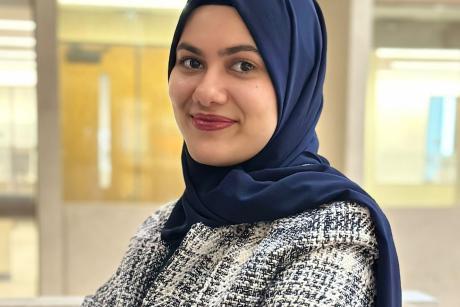An organization founded by Duke medical student and entrepreneur Rajvi Mehta is the Grand Finale winner of the Duke Start-Up Challenge. The organization Let's Be Well Red (LBWR), which combats anemia in India, won the $50,000 grand prize in addition to $5,000 for winning the audience and alumni choice awards.
LBWR is working to make high-protein nutritional bars more accessible in India. In 2012, she led efforts to develop a simple and delicious solution to anemia called the GudNeSs bar. The bars are made from local ingredients and contain the World Health Organization daily recommended dose of iron. Rajvi and the team, which now includes more than a dozen other Duke medical students, have produced tens of thousands of bars and are making them available in retail stores, NGOs and schools across three states of India. Learn more about Mehta's work through LBWR.
An Interview with Rajvi Mehta
Re-posted from Duke Start-Up Challenge
Tell us about yourself:
Born and raised in Mumbai (India), I completed my undergraduate studies at Brown University (RI, USA) where I majored in Biochemistry. I am passionate about global health, public health and research. My interest in global health led me to launch Let's be Well RED (LBWR) a social venture that aims to combat the widespread prevalence of iron deficiency anemia in India through the manufacture of iron-rich nutritional bars. Through my work on LBWR, I realized my passion for medicine and decided to pursue my medical education at Duke University School of Medicine (DukeMed).
Tell us about your time at Duke, what were you involved in?
I am a second year medical student at Duke.
What's your major/program and when will you be graduating? Tell us something about your educational experience at Duke.
MD candidate Duke School of Medicine. The additional knowledge I gained about anemia and iron deficiency anemia as a medical student helped me believe in LBWR's work and solution even more.
Tell us about your idea.
Seventy-five percent of children below the age of 5 years, 51% of women between the ages of 15-49years and 87% percent of pregnant women in India are anemic. In 2011 I launched Let’s be Well RED (LBWR) in Mumbai. LBWR aims to help India fight the anemia crisis by 1)spreading awareness about the condition and 2) by providing a solution to the problem in the form of our iron-rich nutritional bars, Gudness which contain the WHO recommended daily dosage of iron. Gudness is made locally in India with local ingredients. Our goal is to make Gudness available to every anemic individual in India.
How did you come up with your idea? When did you come up with it?
During my sophomore year as an undergraduate at Brown University, I suffered the consequences of low iron and hemoglobin levels in my blood. I couldn’t walk up a flight of stairs without feeling exhausted and I experienced multiple episodes of fainting and chest pain. When I discussed my blood test results with physicians in India, I realized that I was one in over 900,000 million people in India who experience these consequences of anemia on a daily basis and are unaware of their condition. I wanted to do something to help the situation and so I started LBWR initially as a project that filled gaps in previously failed government programs. A market scan of government health programs found that some had neglected nutrition completely in their treatment regime. Others distributed iron-fortified flour and rice, but these programs were unsuccessful due to the lack of awareness about the optimal dosage needed to satisfy the daily iron requirements. So I designed and conducted anemia testing and treating camps in the urban slums of Mumbai wherein I partnered with different NGOs (Family Planning Association of India, Kotak Mahindra and Nargis Dutt Charitable Trust) to spread awareness, conduct blood tests, explain patient reports and provide nutritional guidance. Through these camps we tested and treated over 5000 anemic women. During these interactions I found that while most women were enthusiastic about adding iron to their diet after understanding the consequences of anemia, they were looking for a simple solution to their problem--they were looking for one iron-rich food supplement that contained the required daily dosage of iron. When I surveyed the Indian market, I found no such product and so after a year’s effort, LBWR created our Gudness bars. With 14mg of iron, Gudness exceeds the WHO recommended daily dosage of iron for adult males and menstruating females.
Though the idea for Gudness was conceived through understanding the problems of women in slums, this solution was applicable to any anemic individual. As mentioned before, anemia can affect anyone who neglects their diet/iron intake regardless of their social standing or level of education.
How did you meet your team members?
The team in India has been working on the project since LBWR's inception in 2011. We recently hired 24 new employees for the production unit we recently opened in India.
The team at Duke came together through the efforts of my classmates at DukeMed. We pitched the idea to students at the Undergraduate college, business school and school of Public policy and at the end of two months, we established LBWR's chapter at Duke.
How has the Duke Start-Up Challenge been helpful to you?
Duke Start-Up Challenge helped us connect with resources at and beyond Duke to help expand the impact LBWR has had on field.
What advice do you have for Duke students that are thinking of starting a company?
Duke start-up challenge is a wonderful platform to launch your ideas!



